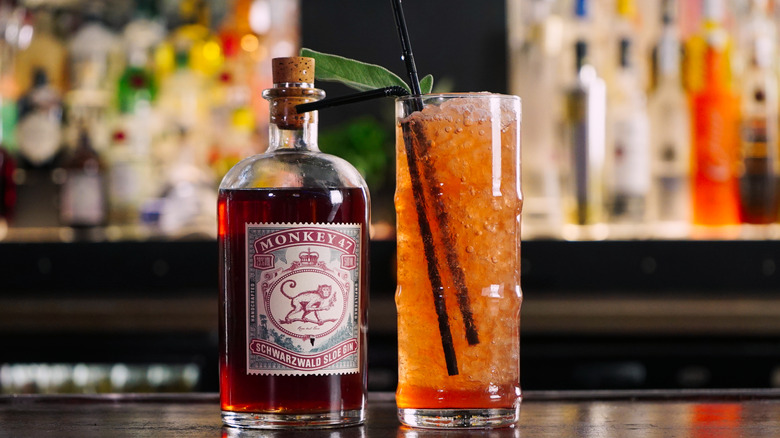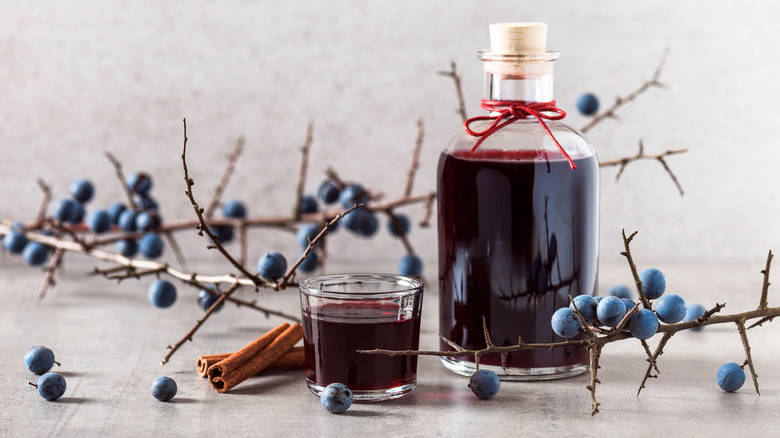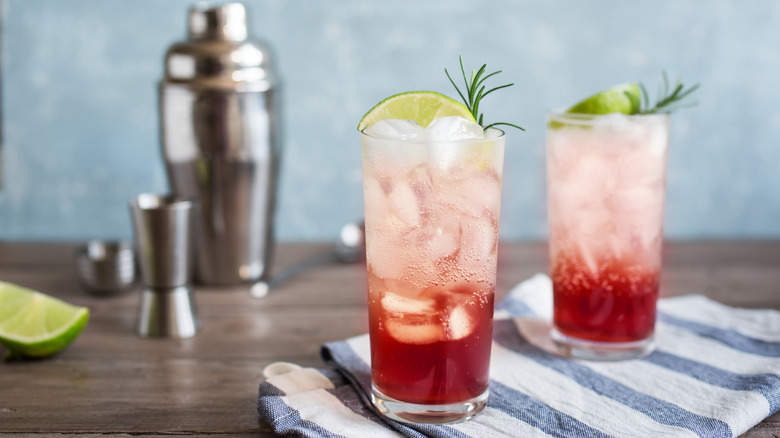What Is Sloe Gin, And Is It Actually Gin?
There's something unique about the bold, herbaceous flavors that spirits like gin, and sloe gin, offer. If you've never heard of sloe gin, you're not alone. With its ruby color, you may wonder how it compares. Sloe gin is actually a liqueur — one that builds on the traditional gin recipe with a twist when it comes to botanicals.
Gin varieties have a long history, with some of them dating back hundreds of years. To be considered a gin, there are a few rules. The first is that one of the botanicals required to be included in the distillation process is juniper berries. People either love or hate these berries because they sometimes taste like pine, but they are where gin's origins begin. The other key aspect of making gin is that the botanical ingredients, whatever they are, and any different flavors are added during distillation. That means that if you take a gin and add flavor after distilling, it's no longer technically a gin.
Sloe gin is actually a berry liqueur
Sloe gin starts as a traditional gin, complete with the juniper notes, before going in its own direction. Sloe berries are harvested from the blackthorn plant and are then added to gin, along with sugar. This has a couple of important effects, the first being that the berries' red color is transferred to the gin, giving it a hue that can range from red to light pink. Adding berries and sugar also lowers the gin's alcohol content significantly. Sloe gin can have as little as a 15% ABV, compared to gin's much higher ABV of around 45%. Berries being added post-distillation, along with the lower alcohol content, mean that sloe gin is technically a berry liqueur.
Don't fret, sloe gin may not technically meet the requirements to be considered a true gin, but it's still very, very similar to gin. Nicolas O'Connor, the director of mixology and culinary arts at Apotheke Mixology, told Food & Wine, "A quality sloe gin has the classic characteristics you'd associate with gin" and "it displays a pleasant herbal blend with strong juniper undertones that blend with the ripe sweetness and acidity of the sloe berries." Essentially, the fruity notes of berry and plum work well with the stronger botanical notes of the gin and result in a delicious liqueur.
Sloe gin isn't a traditional gin, but it's delicious
Sloe gin is delicious on its own, but it really shines when used in mixed drinks and cocktails. Since it shares the same base flavors as gin, it can easily be substituted into classic gin cocktails, like a sloe gin fizz or Tom Collins. The sloe berries add an extra layer of brightness to their traditional notes.
Those aren't the only examples of how it can elevate your mixed drinks. Poured into a margarita, it offers a punch of pomegranate and cranberry to balance the lime and bite of salt. You can also keep it simple and add it to your next glass of champagne for an upgraded Kir Royale–no special occasion required. Sloe gin is an excellent addition to your bar, no matter your drink of choice and will help you reach a whole new level with your cocktail game.


